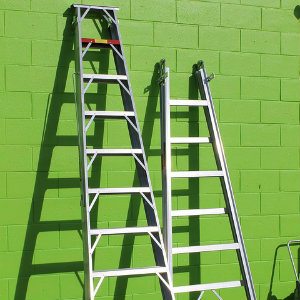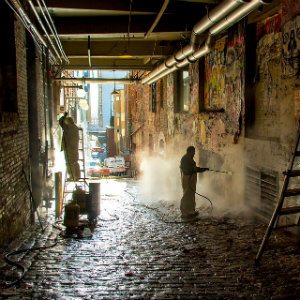Whenever someone hires a painter to do work, chances are that the painter will use a ladder at some point to reach the upper part of walls and ceilings. But did you know that there are strict laws in New York regarding ladder use and the safety measures that need to be taken whenever a worker uses a ladder? Learn more from our ladder fall lawyers in New York.
Both the Occupational Safety & Health Administration and the Department of Buildings has worked to create labor laws regarding ladder use in an effort to prevent accidents. Ladder laws indicate that:

These are just a few of the regulations regarding ladders and employers in New York are expected to follow all of them. When they ignore these rules, their employees get hurt as one man found out.
On the day of his accident, the plaintiff, who was working as a handyman in a New York building, had been asked to paint the interior. He was using a 14-foot ladder and was standing on the ninth rung, when the ladder began to shake, slide, and then ultimately collapsed. He fell to the hard floor below and fractured both his left elbow and his right ankle in several places.
After being rushed to the hospital, he underwent an immediate open reduction internal fixation of the ankle fracture. Unfortunately, his elbow didn’t heal the way that doctors expected it to and two years later he required a decompression surgery during which doctors released and then repositioned his ulnar nerve.
Today, he continues to experience numbness and pain in his ankle which has left him with a permanent limp, as well as reduced strength and pain in his left arm. His doctors have warned him that he will likely need additional surgery on his ankle in the future.
Although workers’ compensation paid for the majority of his medical expenses and a small portion of his lost wages, he still sustained significant losses. For this reason, he chose to pursue a work injury lawsuit.
In his lawsuit, which he filed against the owner of the building, he alleged that they had violated New York Labor Law and that he should have been provided a spotter, adequate footing, and a way
In response, the defendant claimed that the employer was responsible for making sure that safety measures were in place and that the employee should have tied off the ladder before he began work.
The case never went to trial, as the two parties reached a settlement agreement in which the plaintiff obtained $1.1 million in compensation.
In civil lawsuits, most cases never go to trial because, during the discovery phase, an offer of compensation is made that the plaintiff finds acceptable. This frequently saves all parties involved substantial time and money and is an alternative to going to trial. However, if the defendant does not make an offer or if the plaintiff refuses, the case will go to trial.
Was this article informative? Check out other reads here: https://banvillelaw.com/construction-injury/infographic-4-ways-your-construction-job-can-kill-you-and-how-the-law-can-save-you/